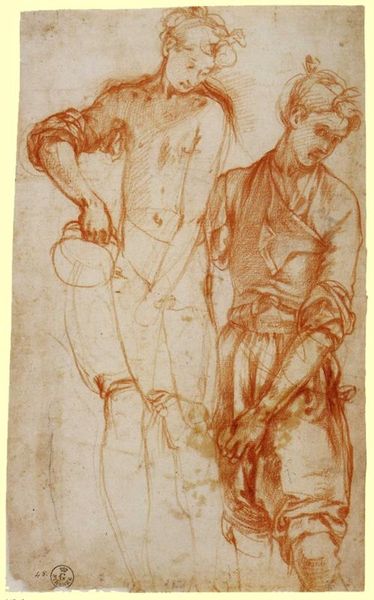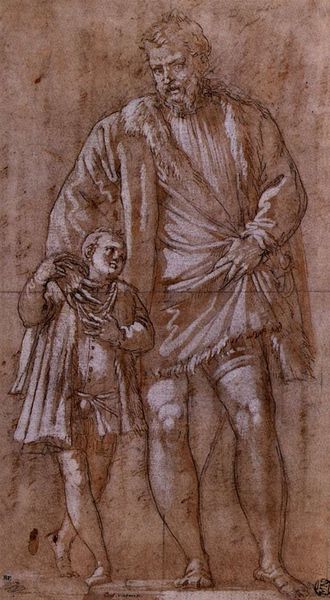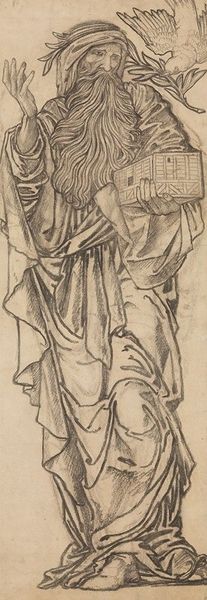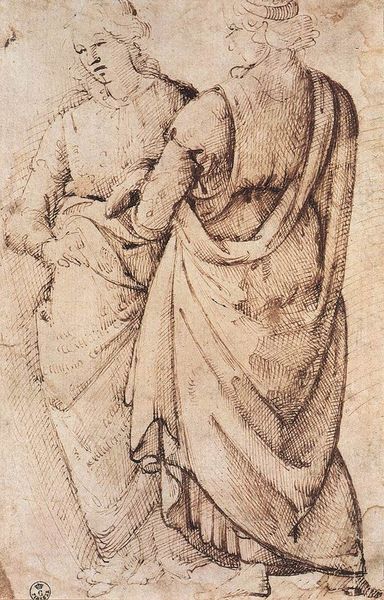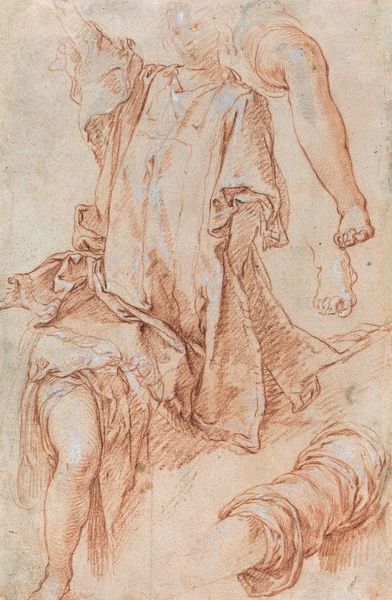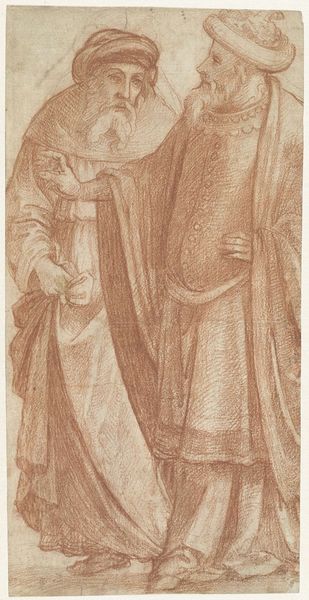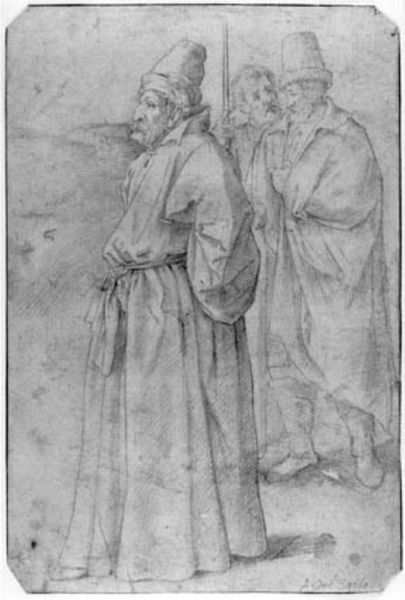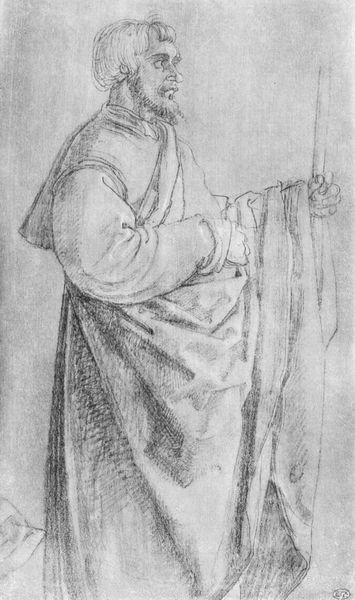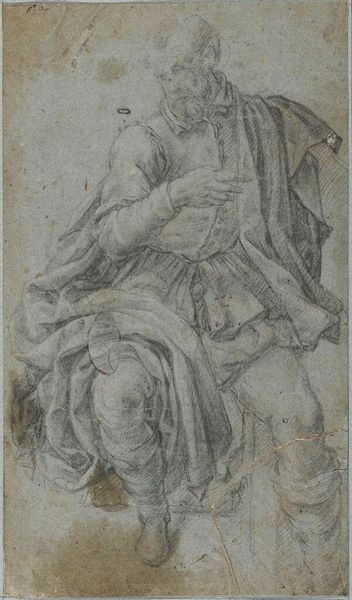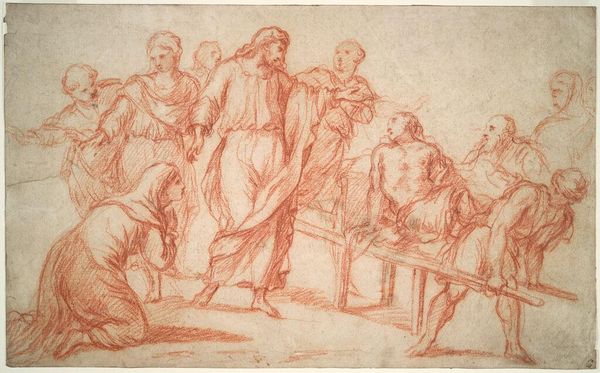
drawing, charcoal
#
portrait
#
drawing
#
charcoal drawing
#
mannerism
#
group-portraits
#
charcoal
#
italian-renaissance
Dimensions: 28 x 20 cm
Copyright: Public domain
Editor: We are looking at "Study of Two Carthusian Monks", a drawing in charcoal by Jacopo Pontormo, around 1525. There is a certain reserved, almost melancholic air to the figures. What strikes you most when you look at this piece? Curator: The seeming simplicity is deceptive, isn't it? These aren't just studies of monks, they're studies of power and the male gaze in a religious order. Consider the historical context: the Renaissance was a time of massive social upheaval and religious questioning. These men, cloistered in their monastery, would have represented both stability and constraint. Editor: I hadn’t considered that. I was focused on the visual harmony. Curator: Exactly! That's where the tension lies. Pontormo's Mannerist style complicates the apparent serenity. The compressed space, the slightly elongated figures, these subtle distortions undermine any sense of straightforward piety. Where does that younger monk fit in with the older? Are they collaborators in maintaining that conservative and oppressive climate or merely fellow inmates in a system far bigger than both of them? Editor: So, it's not just a portrait; it's a commentary on the Carthusian order and broader societal norms? Curator: Precisely! The beauty, in a way, disguises the implicit critique. Pontormo uses his skill to expose the potential for isolation and control within even the most seemingly devout communities. It asks questions about who holds power and how it affects those within the institution, then and even now. Editor: This definitely gives me a new lens through which to view it! I didn't pick up any of those implications initially. Curator: That’s the joy of art history – it constantly challenges our assumptions and demands that we situate the artwork in conversation with historical context, especially intersectional, political and philosophical standpoints. Editor: I’ll remember to approach art with a far wider viewpoint moving forward!
Comments
No comments
Be the first to comment and join the conversation on the ultimate creative platform.

